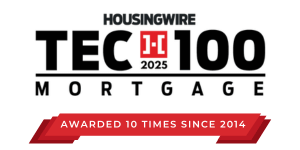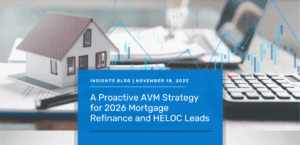Climate-related risks are evolving, non-traditional, and increasingly influencing real estate valuation and investment decisions. Yet, it is essential to note that this type of risk is often overlooked in comparison to more traditional categories, such as financial risk. For instance, a recent study titled ‘Property Prices in Peril’ conducted by First Street Foundation projects that climate-related risks could potentially result in $1.5 trillion in net property value losses, further stressing the cruciality of these ‘neglected’ risks.
This article emphasizes the importance of recognizing emerging risks, anticipating them, and potentially mitigating damage to valuations and investments in the real estate sector.
To provide additional insights into the matter, we turn to Sarah Petteway-Dib, Veros’ Senior Vice President of Product and Data Operations. She delves into the intricacies of this emerging risk, explaining its importance, and discusses how technology can be leveraged to quantify these climate-related risks, as well as how it can facilitate better communication and collaboration among valuers, risk managers, investors, and other stakeholders.
Join us as we explore with Sarah how foresight and innovation are becoming indispensable tools for real estate professionals in this evolving landscape of non-traditional risks.
Climate Risks
In 2024 alone, Veros tracked over 275 natural disaster events, with 182 declared by the Federal Emergency Management Agency (FEMA). Among these, 28 events resulted in damages exceeding $1 billion. This suggests that natural disasters are not only becoming more common but also far more economically disruptive, thereby demonstrating their significant impact on real estate valuation and investment decisions.
And it is not just property values that are affected. When asked about this, Sarah stated, “In many regions, particularly those prone to natural disasters like wildfires and hurricanes, homeowners are experiencing significant increases in insurance premiums.” Insurers are led to reassess their risk exposure, and some have even opted to reduce coverage and exit the higher-risk markets altogether.
Looking more specifically at these locations, such as California, which are very prone to wildfires, major insurers like State Farm have ceased issuing any new homeowner insurance policies. As a result, homeowners are being forced into the Fair Access to Insurance Requirements (FAIR) plan, which offers limited coverage at a higher cost. This escalation in both the frequency and severity of natural disasters encapsulates why climate-related risks are significantly impacting the real estate industry.
These significant increases in insurance premiums are making homeownership more challenging to achieve and less predictable than ever. To provide another example, in Florida, the average home insurance premium rose to $4,231 per year from $2,165 in 2022 (triple the national average) and has been increasing since. As climate-related risks intensify, high-risk areas are becoming increasingly less attractive.
Recognizing these escalating costs and hesitance, governments are stepping in to implement stricter building codes and environmental regulations to combat climate change. For instance, the Inflation Reduction Act offered tax incentives for sustainable investments in hopes that it would encourage developers to prioritize energy-efficient and sustainable construction. Again, this is being done in the hope that it will help homeowners and insurance companies alike mitigate the risk of more expensive damage resulting from natural disasters.
Ultimately, these escalating impacts underscore the urgent need for a more comprehensive and proactive approach to managing climate-related risks in the real estate sector.
Technological Application
Fortunately, technology provides powerful tools to tackle these challenges directly. It plays a crucial role in addressing these non-traditional risks. In Sarah’s view, “It helps in bridging information gaps and promotes collaboration across the real estate and financial ecosystem, especially as non-traditional risks rise in urgency.” Some of these key technologies include Geographic Information Systems (GIS), Remote Sensing and Satellite Imagery, Big Data and Cloud Infrastructure, and Machine Learning & Predictive Modeling.
GIS enables spatial analysis at the parcel level and supports the overlaying of multiple risk layers, including disaster shapefiles that provide property-level impact information. Remote sensing and satellite imagery power real-time monitoring of flood zones, wildfire spread, vegetation, and land use to assess environmental exposure. Big data and cloud infrastructure refer to platforms such as Snowflake® Data Marketplace, AWS, and Azure, which support the large-scale ingestion and analysis of data, thereby fueling advanced risk scoring and modeling. Finally, Machine Learning and Predictive Modeling drive dynamic forecasting of events such as climate hazards, propensity for repeated disasters, migration patterns, and insurance losses, transforming static maps into actionable risk projections.
Veros’ Disaster Vision integrates all of these technologies to evaluate daily nationwide disaster data as well as identify properties that fall within or near disaster impact zones, helping clients with prioritizing inspections to assess exposure. Veros’ sister company, Valligent, can also work with borrowers to virtually inspect the property via their mobile device, enabling eyes on it as soon as possible. It is important to note that rapid assessments are critical for post-event exposure, facilitating a more nuanced and property-level understanding of risk.
By utilizing these tools for non-traditional risks, the housing finance industry can prioritize proactive and productive risk management, ensuring that investments remain sound.
Conclusion
Climate-related risks are often considered non-traditional; however, this does not diminish their importance. But is the real estate industry adequately acknowledging and preparing for this redefined risk? Sarah says, “The real estate industry is beginning to acknowledge redefined risks related to climate; however, overall preparedness is still limited.” There is indeed more awareness and data pointing towards climate change and an increase in natural disasters, but industry action has been slowly acclimating.
The question is: how can this change? Again, Sarah has ideas, stating, “Moving forward, the industry must embed forward-looking risk into every stage of the property lifecycle.” This refers to and includes better alignment between the mortgage and insurance sectors through data sharing and collaboration, empowering better decision-making, greater borrower awareness, adding applicable policy, and a more resilient housing finance system.
Let us evolve from crisis response to long-term resilience. Discover how your valuations and investments can thrive in this new reality.
Visit Veros.com or the Disaster Vision product page for more information! Begin building your resilient future today.




